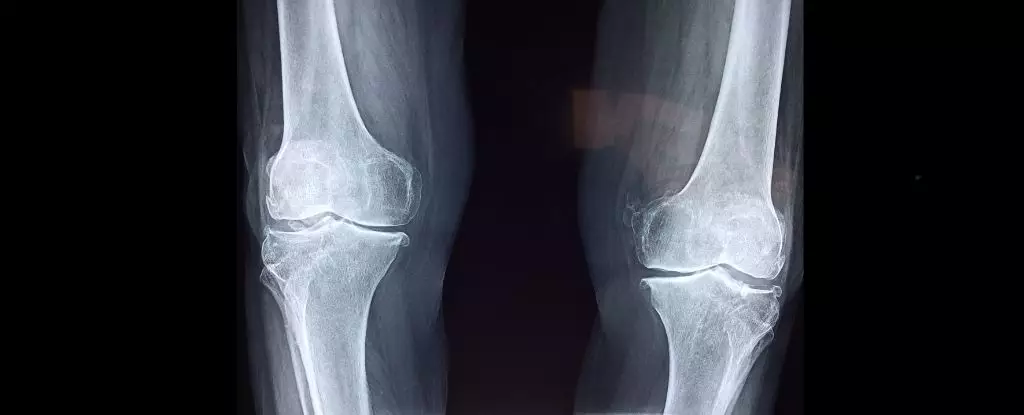Osteoporosis is often categorized as a silent disease, gaining notoriety as a “silent killer” due to the deceptive nature of its onset. Unlike many other health conditions that manifest noticeable symptoms early on, osteoporosis frequently remains undetected until a fracture occurs. This chronic bone ailment, marked by reduced bone density and strength, results in fragile bones susceptible to breaks, most commonly in the spine, hips, and wrists. Current estimates from the National Osteoporosis Foundation reveal that over 10 million Americans are living with osteoporosis, with an additional 43 million exhibiting low bone mass, a precursor to the disease. Alarmingly, projections indicate that within the next decade, we could see a 30% increase in adults affected by either osteoporosis or low bone mass, potentially reaching 71 million individuals.
Rising Numbers: What Contributes to Osteoporosis?
The sharp increase in osteoporosis cases can be attributed to various lifestyle choices, including smoking, insufficient physical activity, and alcohol abuse. Alongside these lifestyle factors, the aging population is an undeniable contributor to the growing prevalence of the disease. As society invests less attention into the complexities of bone health, osteoporosis continues to be a silent threat lurking in the shadows. For those in older age brackets, confronting such statistics can be disheartening; however, orthopedic specialists assert that osteoporosis need not be an unavoidable part of aging.
One critical takeaway is that although the symptoms of osteoporosis may remain hidden initially, certain indicators can signal declining bone health. The real dangers posed by osteoporosis are its complications—chief among them, fractures. Annual estimates suggest that osteoporosis is responsible for nearly 9 million fractures globally, translating to roughly one osteoporotic fracture occurring every three seconds. Everyday activities, such as stumbling or minor falls, can lead to debilitating fractures, particularly in vulnerable areas like the hips, wrists, or spine.
While most individuals experience some degree of height loss as they age, those with osteoporosis could suffer a far more dramatic decrease due to compression fractures in their spine. Observing a loss of two to three inches or more over a brief period can be a troubling sign. Changes in posture, specifically a pronounced curvature of the back or a general appearance of hunching, often indicate a weakening spinal structure. Additionally, persistent back pain might point to the presence of tiny fractures or compression issues within the spine.
Recognizing these warning signs is vital, as osteoporosis cannot be entirely reversed. Nevertheless, lifestyle modifications and dietary interventions significantly lower the risk of developing the condition. Essential nutrients for maintaining bone health include calcium and vitamin D. Calcium is crucial for sustaining strong bones, while vitamin D facilitates calcium absorption. It is recommended that women over age 50 and men over 70 consume a minimum of 1,200 milligrams of calcium each day. Dairy products, notably milk, yogurt, and cheese, stand out as excellent sources. For individuals adhering to a vegan diet, calcium-rich plant foods such as almonds, soy products, and dark leafy greens should be prioritized.
Beyond dietary considerations, regular physical activity plays a prominent role in preventing osteoporosis. Engaging in weight-bearing exercises—think brisk walking, jogging, or dancing—can effectively enhance bone density. Meanwhile, strength training exercises, including weight lifting, can bolster stability and flexibility, crucial for minimizing fall risk. Ideally, adults should aim for 30 minutes of weight-bearing activities at least four days a week, supplemented by muscle-strengthening exercises twice weekly. This is especially pertinent for women who experience significant bone density loss during menopause, underscoring the importance of proactive exercise regimens.
Minimizing detrimental habits, such as smoking and excessive alcohol consumption, is equally vital. These behaviors are known to weaken bone density and elevate fracture risks. Furthermore, implementing fall prevention strategies and balance training exercises can dramatically reduce the likelihood of sustaining a fracture.
According to the US Preventive Services Task Force, women should begin osteoporosis screenings at the age of 65, while men with risk factors—such as those exhibiting unhealthy lifestyle habits or suffering from chronic health conditions—should consider assessments earlier in life. Essential diagnostic tools include bone density scans and spinal X-rays to identify osteoporosis and detect compression fractures.
Effectively managing osteoporosis requires a long-term commitment to lifestyle modifications and awareness of the early warning signs. With proactive measures, the daunting statistics surrounding this silent disease can transform, guiding individuals toward healthier, more resilient bones. By understanding osteoporosis and the significance of early intervention, we can tackle this silent threat head-on and pave the way for a future where healthy bones remain a fundamental aspect of well-being.


Leave a Reply